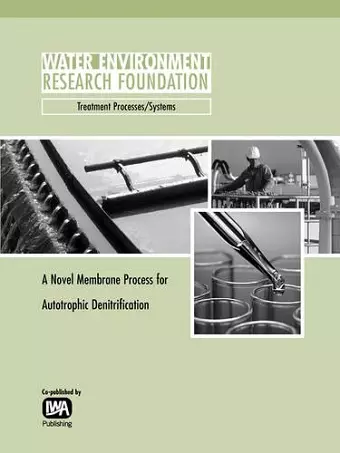A Novel Membrane Process for Autotrophic Denitrification
Format:Paperback
Publisher:IWA Publishing
Published:30th Jun '03
Currently unavailable, and unfortunately no date known when it will be back

Biological denitrification by heterotrophic bacteria is common in the wastewater industry in the U.S. and in drinking water processing in Europe. To facilitate heterotrophic denitrification, organic compounds such as methanol, ethanol and acetic acid are added to provide a carbon source for the bacteria. The resulting organic carbon residual may create problems with chlorination. The addition of these carbon compounds is expensive and results in added sludge production. This study focused on the use of autotrophic hydrogen oxidizing bacteria for denitrification. The method transfers hydrogen gas to solution via microporous hollow fiber membranes. Typically, gases are supplied to a system using conventional bubble diffusers. The conventional bubble aeration system has a low gas transfer efficiency, and, as a result, the cost of dissolving the required amount of gas is very high. In this study, microporous hollow fiber membranes were employed to supply hydrogen gas to hydrogen oxidizing autotrophic bacteria. Laboratory scale membrane modules were constructed and mass transfer studies were carried out to develop the design correlations for hydrogen gas transfer. A mixed culture was obtained and acclimated for batch denitrification studies. Both Sodium carbonate and carbon dioxide were used to deliver inorganic carbon. Bench scale continuous flow biofilm reactors containing plastic media were operated to remove nitrate from water. The required hydrogen gas was supplied at a constant rate via gas transfer modules, containing sealed end microporous hollow fiber membranes. The reactors were optimized for removal of nitrate and nitrite by varying the recycle ratios and hydraulic detention time. Experimental results indicated the presence of hydrogen oxidizing denitrifiers in wastewater sludge. Adequate pH control was possible and the pH averaged around 6.95. Gas transfer studies indicated that hydrogen transfer was primarily controlled by liquid film diffusion. Hydrogen gas was successfully delivered to the reactor via the hollow fiber membrane gas transfer module. Nitrate and hydrogen concentration measurements indicated that the system did not experience hydrogen limitations at detention times of 3.25 hours or greater. The use of hollow fiber membrane module appears to be a viable technology for transferring hydrogen gas to water. The research results in this report provide valuable information for pilot and full-scale studies for the water/wastewater community focusing on membrane processes for autotrophic denitrification.
ISBN: 9781843396437
Dimensions: 234mm x 156mm x 18mm
Weight: unknown
74 pages